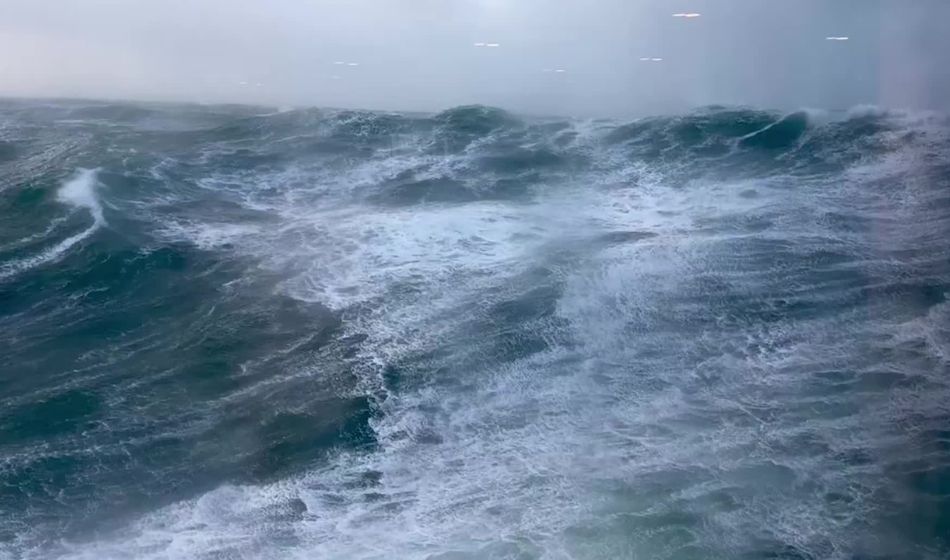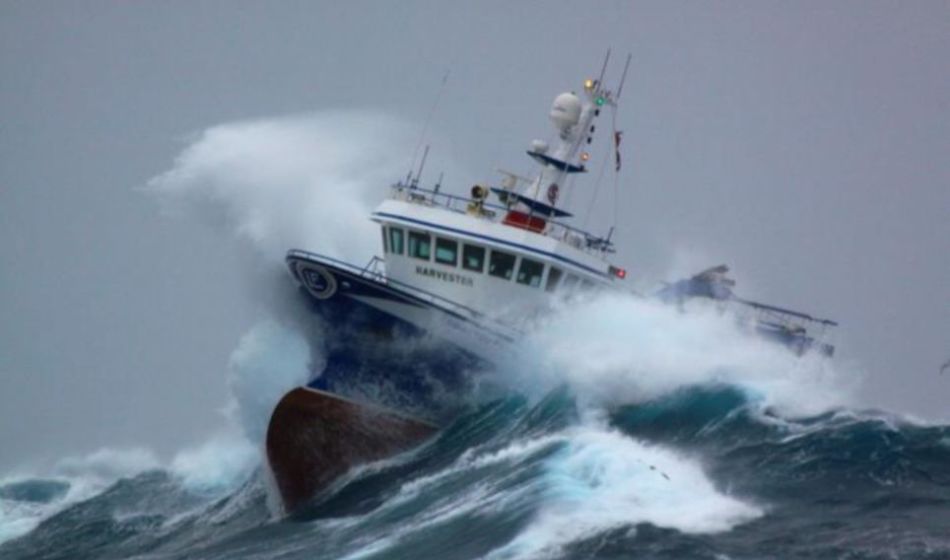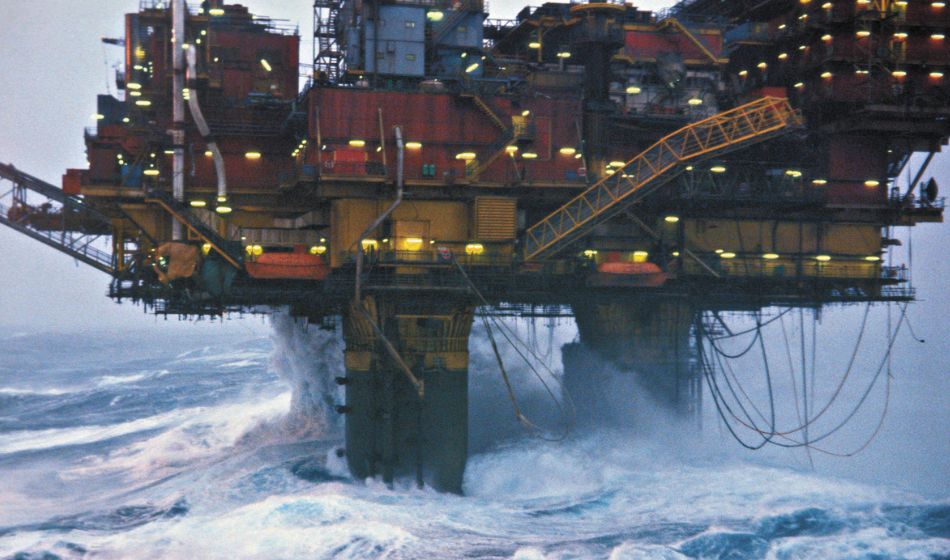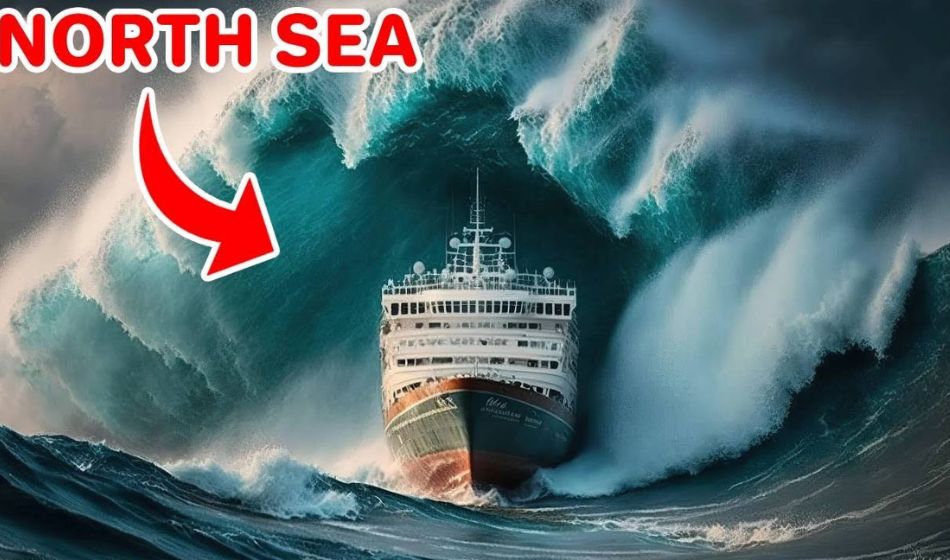The North Sea, located between the British Isles and mainland Europe, has earned a reputation as one of the most treacherous bodies of water on the planet. Its perilous weather patterns, tumultuous tides, and the history of tragic accidents all contribute to its notoriety. But why exactly is the North Sea considered the most dangerous? In this in-depth article, we uncover the factors that make it so hazardous, from its natural elements to the human activities that compound the risks.
The North Sea: Beauty and Danger Combined
The North Sea, known for its striking coastline and rich history, has long served as a vital maritime corridor for Europe, connecting the British Isles to Scandinavia, Germany, the Netherlands, and beyond. It plays a crucial role in commerce, fishing, and energy production. However, beneath its economic significance lies a darker reality that has claimed countless lives and continues to challenge even the most seasoned sailors. The North Sea presents various dangers, including treacherous storms, strong tidal currents, and man-made hazards such as offshore oil rigs and heavy shipping traffic.

The Geography and Depths of the North Sea: A Natural Challenge
One of the main reasons the North Sea is so dangerous lies in its geography and topography. Spanning approximately 570,000 square kilometers, it may seem small compared to oceans, but its shallow depths and unique underwater topography make it particularly treacherous.
Key Features That Increase Risk:
- Shallow Depths: The North Sea is relatively shallow, with an average depth of only 95 meters. This shallow water allows winds to generate steep, short waves that can quickly capsize vessels, especially smaller fishing boats.
- Sandbanks and Reefs: The sea is riddled with hidden sandbanks, reefs, and shoals that make navigation difficult. These underwater obstacles can damage or sink ships that stray off course or fail to account for the constantly shifting sands.
- The Channel Tides: Tides in the sea are highly variable and can produce powerful currents. The tidal range, especially around the British Isles, can vary by up to 7 meters, leading to dangerous fast-moving waters that are difficult to predict.
This combination of shallow water and shifting topography makes the North Sea unpredictable, even for experienced sailors. Weather can turn rapidly, and sandbanks can appear where charts previously showed safe passage.
Unforgiving Weather: The Storms of the North Sea

The weather in the sea is notoriously harsh. This region frequently experiences severe storms, particularly during the winter months, which can lead to hazardous conditions for both maritime activities and offshore industries.
Factors Contributing to Severe Weather:
- Proximity to the Atlantic: The sea here is greatly influenced by weather systems originating in the North Atlantic due to its proximity. The frequent arrival of low-pressure systems leads to high winds and violent storms.
- Wind and Wave Action: Gale-force winds are common in the North Sea, and these strong winds can whip up enormous waves in a short period. The shallow depth of the sea amplifies this effect, creating short, choppy waves that are difficult to navigate.
- Sudden Weather Changes: Weather conditions in the sea can change rapidly, with storms often forming unexpectedly. Fishermen, oil rig workers, and sailors must always be on high alert.
Social media insights:
On social media platforms like Twitter and Reddit, many seafarers and offshore workers share their experiences with the North Sea’s unpredictable weather. Some threads detail storms with wind speeds exceeding 100 km/h and waves towering as high as 10 meters, making even the most modern ships feel vulnerable.
The Infamous Rogue Waves of the North Sea
Rogue waves, enormous and sudden surges that can emerge in otherwise tranquil seas, largely contribute to the North Sea’s reputation as one of the most dangerous bodies of water.
The Science Behind Rogue Waves:
- Constructive Interference: Rogue waves often result from a process known as constructive interference, where smaller waves merge to form a giant wave, sometimes more than double the height of the surrounding waves.
- Reports and Incidents: Rogue waves in the North Sea have been responsible for many shipwrecks and offshore platform accidents. These waves are hazardous because they occur without warning and are often not included in traditional weather forecasts.
While rogue waves are a global phenomenon, the North Sea’s unique conditions—shallow waters, strong tides, and high winds—make it a hotbed for their formation. Maritime engineers and scientists continue to study these waves to improve forecasting, but they remain unpredictable threats to vessels and oil platforms.
Heavy Maritime Traffic: A Crowded and Risky Waterway
The North Sea is one of the busiest seas in the world, with heavy shipping traffic contributing to the risks. Every day, thousands of ships, from massive oil tankers to small fishing boats, navigate these waters, increasing the likelihood of collisions and accidents.
The Dangers of Dense Maritime Traffic
- Shipping Lanes: Major shipping routes cross the North Sea, connecting ports in the UK, Germany, the Netherlands, and Scandinavia. The sheer volume of ships combined with the sea’s challenging weather and geography creates a high potential for accidents.
- Fishing Industry: The North Sea is home to one of Europe’s largest fishing industries. Fishing boats, often smaller and less sturdy, are particularly vulnerable to collisions with larger vessels or accidents caused by rough seas.
- Oil and Gas Infrastructure: The North Sea is also a major hub for oil and gas production, with hundreds of offshore platforms dotting its waters. These platforms, along with the ships and helicopters servicing them, add another layer of complexity to maritime navigation.
Notable Accidents:
The MS Estonia disaster in 1994, where a ferry sank during a storm in the Baltic Sea (connected to the North Sea), claimed over 850 lives and remains one of the deadliest maritime accidents in European waters. Such incidents illustrate how the combination of bad weather, dense traffic, and complex infrastructure can lead to tragedy.
The Oil Industry: A Key Risk Factor in the North Sea

The North Sea is one of the world’s most productive areas for oil and natural gas extraction, particularly off the coasts of Norway and the UK. However, the offshore oil industry adds another layer of danger to the already treacherous waters.
Challenges Posed by Offshore Oil Rigs:
- Harsh Working Conditions: Offshore workers face severe weather, isolation, and the constant risk of accidents or explosions on platforms. The 1988 Piper Alpha disaster remains a stark reminder of how dangerous this work can be.
- Helicopter Crashes: Operators commonly employ helicopters to convey personnel to and from oil platforms; however, these flights present significant risks due to variable weather conditions and the requirement for pilots to land on small, mobile platforms amid turbulent seas.
- Environmental Hazards: Oil spills and platform accidents can also have devastating environmental impacts, further complicating rescue efforts and increasing the risk of long-term damage to the marine ecosystem.
Environmental Risks: Climate Change and the Future of the North Sea
The dangers of the North Sea are not just historical—they are evolving. Climate change is expected to make some of the challenges in the North Sea a bit tougher in the years ahead.
How Climate Change is Making the North Sea More Dangerous:
- Rising Sea Levels: As global sea levels rise, the risk of flooding in low-lying coastal areas around the North Sea increases. Storm surges and high tides will have a greater impact, leading to more frequent and severe coastal flooding.
- More intense storms: Climate models suggest that storms in the North Sea will become more intense and frequent as global temperatures rise. This means stronger winds, higher waves, and an increased risk of maritime accidents.
- Warming Waters: The North Sea is warming faster than many other bodies of water, which can disrupt ecosystems and fisheries, making it more difficult for those who rely on these waters for their livelihoods.
As climate change accelerates, industries that depend on the North Sea, such as fishing, oil, and shipping, will face even greater challenges. Maritime safety regulations and disaster preparedness plans will need to adapt to these new risks.
Rescue and Safety in the North Sea: How Prepared Are We?
Given the high risks involved in navigating the North Sea, maritime safety has been a priority for the countries bordering these dangerous waters. Rescue operations and safety protocols have improved over the years, but even with modern technology, saving lives in this region is still an immense challenge.
Key Aspects of North Sea Rescue and Safety Operations:
- Coastguard Services: The UK, Norway, the Netherlands, and other bordering countries have invested heavily in coastguard services dedicated to monitoring and responding to emergencies in the North Sea. Advanced radar systems, communication networks, and rescue vessels are constantly on alert to respond to ships in distress.
- Helicopter Rescue: Helicopters play a crucial role in rescuing crew members from stranded ships or offshore platforms. However, severe weather often limits the effectiveness of air rescue, as high winds and turbulent seas can make it nearly impossible to land or perform operations.
- Survival Suits and Safety Gear: Given the freezing temperatures of the North Sea, survival equipment is critical. Crew members on fishing boats, oil rigs, and shipping vessels wear specially designed survival suits that effectively guard against hypothermia if they find themselves in the water.
- Marine Traffic Control: With such a crowded maritime environment, controlling traffic and preventing collisions is key to minimizing accidents. Countries surrounding the North Sea use a network of surveillance systems and marine traffic management tools to monitor vessel movements, ensuring that ships follow designated lanes and avoid high-risk areas.
Fishermen’s Lives in Peril: The Human Cost of North Sea Dangers
Fishermen have been among the most affected by the North Sea’s treacherous conditions for centuries. Despite technological advancements and better safety protocols, fishing remains one of the most dangerous occupations, particularly in this region.
Why Fishermen Are Especially Vulnerable:
- Small Boats in Big Storms: Many fishing vessels are relatively small and not built to withstand the sudden storms and rough seas that frequently occur in the North Sea. Even seasoned fishermen can find themselves in life-threatening situations when weather conditions worsen unexpectedly.
- Fishing Gear Hazards: Aside from the dangers posed by the sea itself, fishing gear can also cause accidents. Nets and lines can entangle fishermen, and the process of hauling heavy catches in stormy seas can lead to injuries or falls overboard.
- Economic Pressures: The pressure to make a living drives many fishermen to take risks by venturing out in hazardous weather conditions. With livelihoods on the line, safety concerns are sometimes overshadowed by the need to bring home a catch.
Tragic Events:
One of the most tragic incidents in recent memory was the loss of the French trawler Bugaled Breizh in 2004, which sank mysteriously in the English Channel, taking the lives of all five crew members. While experts continue to debate the exact cause, many recognize the treacherous conditions and risks of fishing in the North Sea.
Environmental Hazards: Protecting the Fragile North Sea Ecosystem
The North Sea is not only dangerous for humans; it is also under significant environmental threat. Human activity, climate change, and pollution are endangering the delicate balance of the North Sea’s marine ecosystem, adding to its list of dangers.
Environmental Challenges Facing the North Sea
- Oil Spills and Pollution: The North Sea’s oil and gas industries have contributed to the risk of pollution. Oil spills, though rare, can have devastating impacts on marine life and take years to recover from. Additionally, the sea faces ongoing threats from shipping-related pollutants such as fuel and plastics.
- Overfishing: The North Sea’s fish stocks are under immense pressure from commercial fishing, with several species such as cod and herring having been severely depleted over the years. Overfishing disrupts the marine food chain and endangers the livelihoods of fishermen.
- Marine Traffic and Noise Pollution: The heavy shipping traffic in the North Sea creates noise pollution that disrupts marine mammals, such as dolphins and seals. This constant disturbance can impact feeding, communication, and mating behaviors.
Conservation Efforts:
Countries bordering the North Sea have made significant efforts to protect its waters. Marine conservation zones have been established, and stricter regulations on fishing quotas and emissions from ships have been introduced. These initiatives are crucial in maintaining the North Sea’s biodiversity and mitigating the environmental hazards it faces.
Navigating the Future: Can the North Sea Become Safer?
Despite the inherent dangers of the North Sea, advancements in technology, improved safety regulations, and better environmental protection measures offer hope for a safer future.
What the Future Holds:
- Improved Weather Forecasting: Advances in meteorology and satellite technology are making it possible to predict North Sea weather with greater accuracy. Better forecasts allow ships, fishing vessels, and oil rigs to prepare for or avoid hazardous conditions.
- Autonomous Ships and Drones: As technology continues to evolve, the use of autonomous ships and drones could transform how we navigate and operate in the sea. These unmanned vessels and aerial vehicles could take over some of the riskiest tasks, reducing human exposure to danger.
- Sustainable Practices: There is growing recognition that protecting the environment will, in turn, improve safety in the North Sea. Sustainable fishing practices, reduced pollution, and climate change mitigation efforts are essential for the long-term health of both the marine ecosystem and the industries that rely on it.
- Stronger Regulations: Regulatory bodies are continuously working to improve safety standards for both maritime traffic and offshore industries. Stricter enforcement of rules regarding vessel maintenance, navigation protocols, and emergency preparedness can reduce the number of accidents and save lives.
Tales of Heroism and Tragedy
For centuries, stories of survival, heroism, and tragedy in the North Sea have captivated people across the globe. From shipwrecks to daring rescues, these tales highlight both the brutal nature of the sea and the resilience of those who navigate it.
Remarkable Stories from this Sea
- The Shetland Bus: During World War II, Norwegian resistance fighters used fishing boats to cross the treacherous waters of the North Sea to carry out sabotage missions and deliver supplies. Known as the Shetland Bus, these brave sailors often faced brutal weather, German patrols, and the risk of being lost at sea, but their efforts were critical in resisting Nazi occupation.
- The 1988 Piper Alpha Disaster: The deadliest offshore oil platform accident in history, the Piper Alpha explosion claimed the lives of 167 workers in the North Sea. Despite the inferno, heroic rescue teams managed to save 61 survivors, and the incident prompted a complete overhaul of offshore safety regulations in the region.
- The Rescue of MV Riverdance: In 2008, a dramatic rescue operation took place after the cargo ship MV Riverdance ran aground during a violent storm off the coast of England. Helicopters and lifeboats worked together to save the entire crew in hazardous conditions, showcasing the incredible bravery and skill of North Sea rescue teams.
Social media insight
On platforms like Facebook and Instagram, many groups share photographs and firsthand accounts of survival and heroism in the North Sea. These accounts serve as a reminder of both the harsh reality and the enduring fascination with this body of water, as well as the bravery of those who risk their lives at sea.
The Role of Technology in Reducing Risks in the North Sea
While the dangers of the North Sea are undeniable, technological advancements are playing a crucial role in minimizing risks. From advanced navigation systems to AI-driven weather forecasting, technology is transforming how we approach safety and efficiency in this perilous region.
Key technological advancements
- Advanced GPS and Radar Systems: Modern ships are equipped with state-of-the-art navigation systems that can detect hidden sandbanks, monitor maritime traffic, and alert crews to sudden changes in weather or sea conditions. This technology has significantly reduced the number of accidents in the North Sea.
- Weather Prediction Models: With satellite data and AI-powered weather models, forecasters are able to predict storms, rogue waves, and other hazardous weather patterns with greater accuracy. This has helped prevent countless maritime disasters by giving sailors and offshore workers more time to prepare.
- Autonomous Vessels: In recent years, there has been a surge in the development of autonomous ships and drones designed to perform dangerous tasks without human intervention. These unmanned vessels can monitor sea conditions, inspect oil rigs, and even transport cargo, reducing the need for humans to operate in hazardous environments.
- Offshore Safety Innovations: Safety technologies on oil rigs and wind farms have improved dramatically. From advanced fire suppression systems to escape pods and emergency alert networks, these innovations are helping to protect workers in case of accidents or extreme weather events.
The Future of North Sea Safety
As technology continues to advance, there is hope that the risks associated with the North Sea will decrease over time. Innovations in AI, automation, and real-time data collection will allow for better prediction, preparation, and prevention, reducing the human toll on this unforgiving sea.
Famous Shipwrecks of the North Sea: Learning from the Past
The history of the North Sea is littered with shipwrecks, each a tragic reminder of the sea’s power. These disasters have not only claimed lives but have also taught valuable lessons that have shaped modern maritime safety protocols.
Notable Shipwrecks in North Sea History
- HMS Hampshire: In 1916, during World War I, HMS Hampshire sank off the coast of Orkney after striking a mine, killing over 700 people, including the British war secretary Lord Kitchener. This disaster highlighted the threat of naval mines in the North Sea and led to improved mine detection and ship-evacuation procedures.
- SS Cap Arcona: Near the end of World War II, the German ship SS Cap Arcona was mistakenly bombed by Allied forces while carrying thousands of concentration camp prisoners. Over 5,000 people died in one of the worst maritime tragedies of the war.
- MS Estonia: One of the most devastating peacetime maritime disasters occurred in 1994 when the ferry MS Estonia sank in the Baltic Sea, which is connected to the North Sea, due to poor weather and structural failure. This incident led to stricter international safety standards for ships operating in the North Sea and beyond.
Learning from Tragedies
Each of these shipwrecks and countless others has prompted changes in maritime safety laws, shipbuilding standards, and navigation technology. These lessons from the past continue to inform the way we approach safety in the North Sea today.
Conclusion
The North Sea holds a dual identity as both an economic powerhouse and one of the most dangerous seas in the world. While it has provided livelihoods for countless generations of fishermen, oil workers, and sailors, it has also claimed many lives, a testament to its treacherous conditions and unpredictable nature.
Understanding why the North Sea is so dangerous—through its geography, weather patterns, and industrial hazards provides valuable insight into how we can continue to mitigate these risks. From technological innovations and improved safety protocols to environmental conservation and preparation for climate change, there is hope that the dangers of the North Sea can be reduced in the future.
However, the North Sea will always remain a force to be reckoned with. Whether you are navigating its waters or working on its shores, respect for its power is essential. For as long as people continue to depend on the North Sea, its beauty and dangers will continue to shape the lives of those who venture into its waters.
Call to Action:
Do you have your own experiences or stories related to the North Sea? Share your thoughts, tales of survival, or lessons learned in the comments below. Join the conversation and explore more resources on maritime safety and the future of the North Sea.
Let’s work together to raise awareness about the North Sea’s risks and solutions for a safer future.

